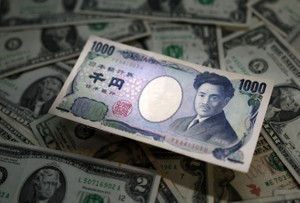Vox Populi, Vox Dei is a daily column that runs on Page 1 of The Asahi Shimbun.
June 14, 2022 at 12:03 JST
 A picture taken after the Meiji Sanriku tsunami at Kamaishi, Iwate Prefecture, in 1896. (Asahi file photo)
A picture taken after the Meiji Sanriku tsunami at Kamaishi, Iwate Prefecture, in 1896. (Asahi file photo)
The Meiji Sanriku tsunami, which struck 126 years ago, killed as many as 20,000 people.
A stone cenotaph was erected in the village of Toni in Kamaishi, Iwate Prefecture, to mark the disaster of June 15, 1896.
In March 2011, the deadly tsunami triggered by the Great East Japan Earthquake tore off half the plaque from the monument, reducing its inscribed message to just a jumble of disjointed words.
Repairs on the monument were completed recently, and I visited the town to see it.
Named the "Kaisho Sonan Kinen no Hi" (Tsunami disaster memorial monument), it stands 2 meters tall.
"The (original) plaque was ripped off by the tsunami," said Arata Tezuka, 49, an official at Kamaishi's cultural promotion department.
Tezuka explained that the damaged parts were deliberately left as they were to highlight the tsunami's destructive power.
What was left of the plaque was reinforced at the National Museum of Ethnology in Suita, Osaka Prefecture, and embedded in the new cenotaph, together with a contemporary Japanese translation of the original text in its entirety.
"Raging, high waves kept rushing, one after another, claiming 800 lives and sparing only 20 people," goes one passage.
When Tezuka and his team researched stone cenotaphs in the city, they discovered more than 30 monuments dedicated to victims of "violent death" and "drowning" in the catastrophic tsunami of the Meiji Era (1868-1912).
Most of the monuments were concentrated in areas that suffered the worst damage and many marked the tsunami's highest water levels.
Author Akira Yoshimura (1927-2006) based his work "Sanriku Kaigan O-tsunami" (Great tsunami of the Sanriku coast) on interviews with survivors.
I read it when I was a student and was deeply unnerved by the sheer menace of the catastrophe.
Just before the tsunami, according to Yoshimura, the Sanriku coast was abuzz over a record haul of fish. The night of the tsunami, a tremendous roar was heard from the sea, which some people thought must have come from a Russian warship, as Japan's relations with Russia were tense at the time.
A new stone slab, erected near the Meiji tsunami monument, is inscribed with words of residents who survived the Great East Japan Earthquake and tsunami.
"The ground rumbled, accompanied by a violent jolt," recalled a sixth-year elementary school student. "A few minutes later, black water swallowed up our town. The gym where I was at the time doesn't exist anymore."
The child's recollection renewed my resolve to ensure such accounts will be repeated for posterity.
--The Asahi Shimbun, June 14
* * *
Vox Populi, Vox Dei is a popular daily column that takes up a wide range of topics, including culture, arts and social trends and developments. Written by veteran Asahi Shimbun writers, the column provides useful perspectives on and insights into contemporary Japan and its culture.




















Stories about memories of cherry blossoms solicited from readers
Cooking experts, chefs and others involved in the field of food introduce their special recipes intertwined with their paths in life.
A series based on diplomatic documents declassified by Japan’s Foreign Ministry
A series on the death of a Japanese woman that sparked a debate about criminal justice policy in the United States
A series about Japanese-Americans and their memories of World War II
Here is a collection of first-hand accounts by “hibakusha” atomic bomb survivors.